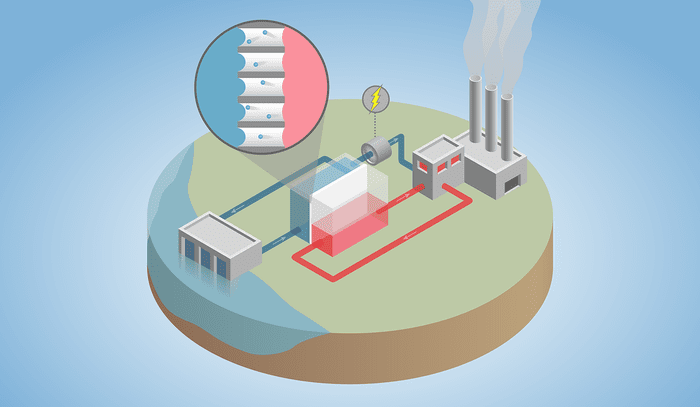Low Power Wasted Heat To Power Theory Could Provide The World An Alternative Source
People working in power plants and other massive energy-dependent industries have greater idea on the amount of energy wasted during a process. Not only waste materials but also heat energy is released which generally is not recycled like wasted products and contemporary systems let it pass, losing a tremendous opportunity to reuse that huge amount of energy in propelling other sub sections.
Recently a team of researchers from Yale University has designed a plan to transform such an idea into reality and has successfully preformed a prototype. The devised technology could extract a significant amount of energy from low-power (LP) wasted heat delivered as a consequence of related processes. The idea itself is unique as although previously high-power wasted heat energy has been put to use, due to technical complications low-power wasted heat has never been used in the past. Difficulty arises as to use LP wasted energy it needs to be extracted, maintaining a very low temperature difference between the plant’s heat discharge and the surrounding.

The Low-Power Wasted Heat To Power Supply Prototype Diagram
The research team hailing from Chemical and Environmental engineering department has fabricated a system that has potential to successfully remove the aforementioned challenges. As the primary weapon the team has exploited “nanobubble membrane†that holds tiny air bubbles using its porous confinement while immersed in water. Now if one side of the membrane is heated, water evaporates and flows across the bubbles and ultimately gets condensed on the other side. The flow is then channeled to a turbine to generate electricity.
The team has chosen nano-bubble in such a format that its surface chemistry works in rapport with the primary requirement for air-bubble trapping system. The bubbles were constricted within the pores even when large pressure was generated. The outer coating of the bubble has a thickness comparable to 2 sheets of paper and was created using extensively hydrophobic polymer nano-fiber. Co-author of the related research paper Menachem Elimelech commented that very fine calculations were done on selection of the membrane so that the system generates pressure.
Anthony Straub, first author and the doctoral fellow of the same department implied that their research product has overpowered many other similar projects with its working efficiency and cost effective nature. The completed work is not yet commercially viable and needs further research and fine-tuning, as accepted by the team. The complete research paper has been published in Nature Energy.
Source: <a href="https://news.yale.edu/2016/06/27/yale-researchers-technology-turns-wasted-heat-power" target="_blank" rel="nofollow noopener noreferrer">Yale researchers’ technology turns wasted heat into power | YaleNews</a>
Recently a team of researchers from Yale University has designed a plan to transform such an idea into reality and has successfully preformed a prototype. The devised technology could extract a significant amount of energy from low-power (LP) wasted heat delivered as a consequence of related processes. The idea itself is unique as although previously high-power wasted heat energy has been put to use, due to technical complications low-power wasted heat has never been used in the past. Difficulty arises as to use LP wasted energy it needs to be extracted, maintaining a very low temperature difference between the plant’s heat discharge and the surrounding.

The Low-Power Wasted Heat To Power Supply Prototype Diagram
The team has chosen nano-bubble in such a format that its surface chemistry works in rapport with the primary requirement for air-bubble trapping system. The bubbles were constricted within the pores even when large pressure was generated. The outer coating of the bubble has a thickness comparable to 2 sheets of paper and was created using extensively hydrophobic polymer nano-fiber. Co-author of the related research paper Menachem Elimelech commented that very fine calculations were done on selection of the membrane so that the system generates pressure.
Anthony Straub, first author and the doctoral fellow of the same department implied that their research product has overpowered many other similar projects with its working efficiency and cost effective nature. The completed work is not yet commercially viable and needs further research and fine-tuning, as accepted by the team. The complete research paper has been published in Nature Energy.
Source: <a href="https://news.yale.edu/2016/06/27/yale-researchers-technology-turns-wasted-heat-power" target="_blank" rel="nofollow noopener noreferrer">Yale researchers’ technology turns wasted heat into power | YaleNews</a>
0
